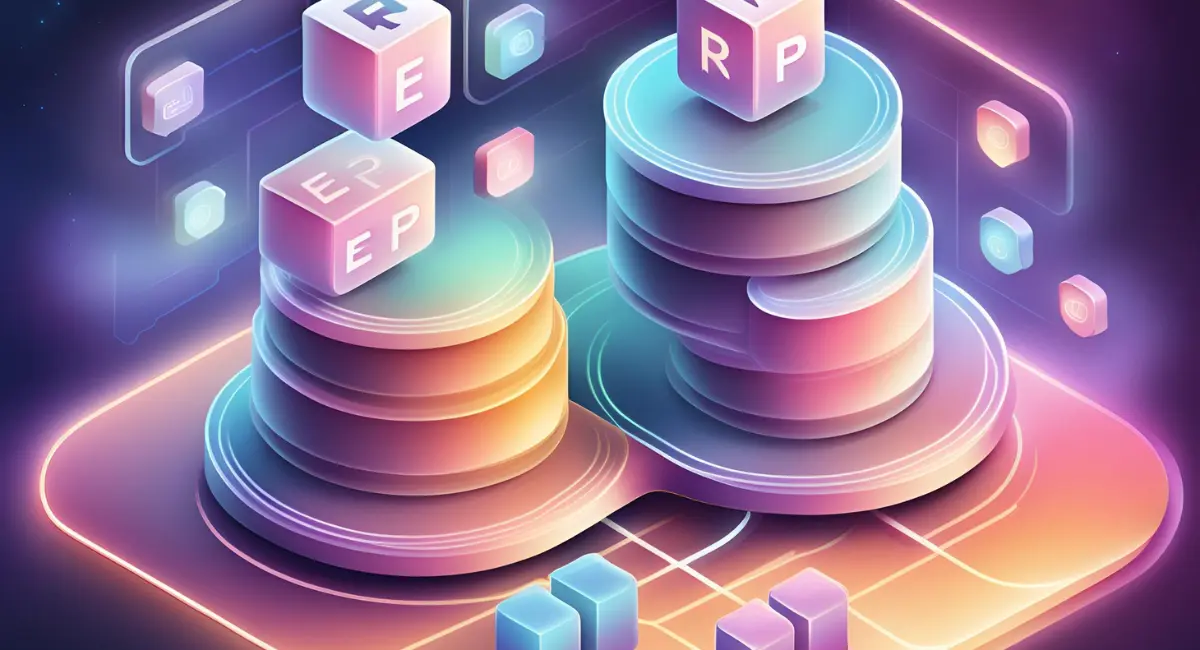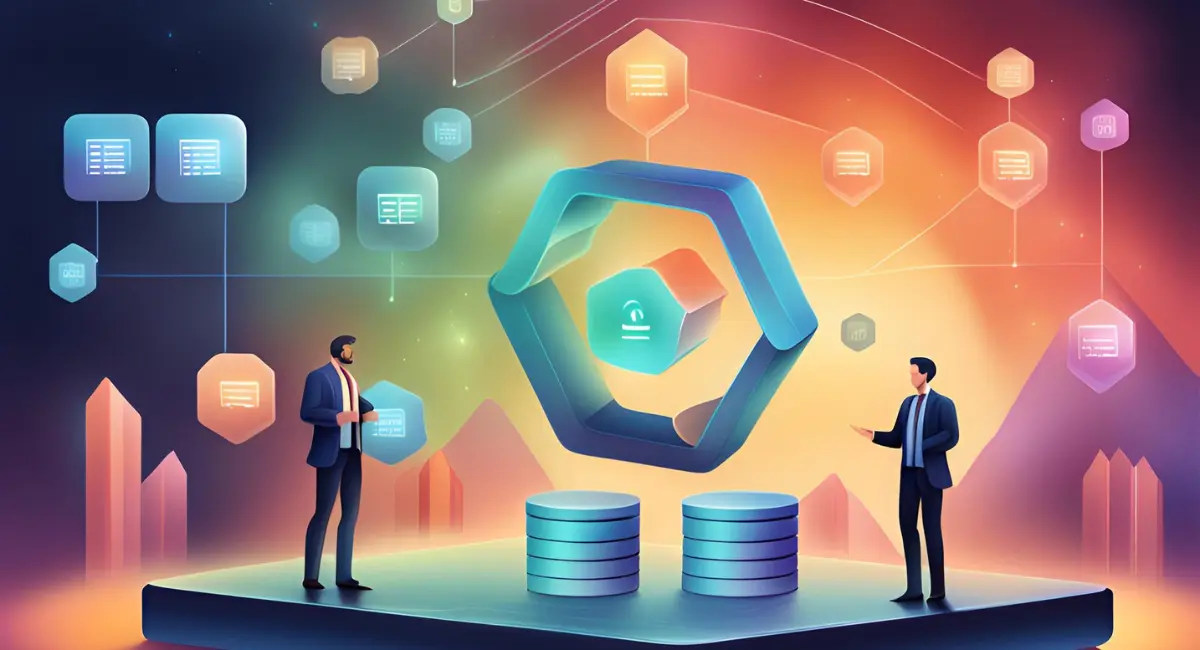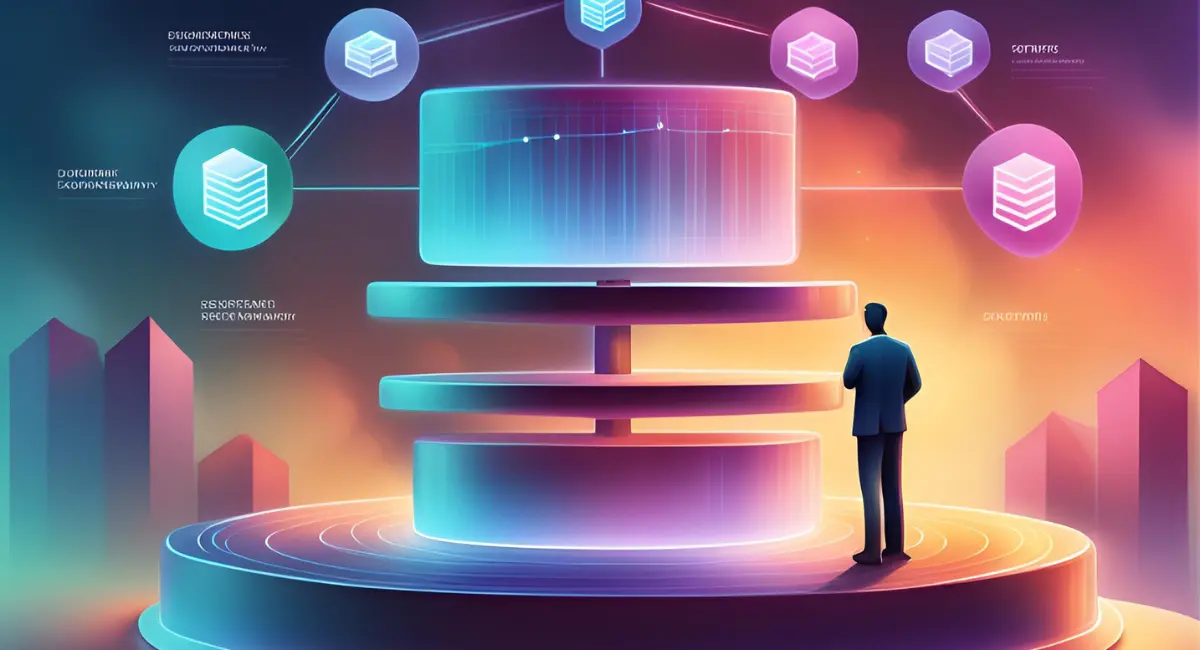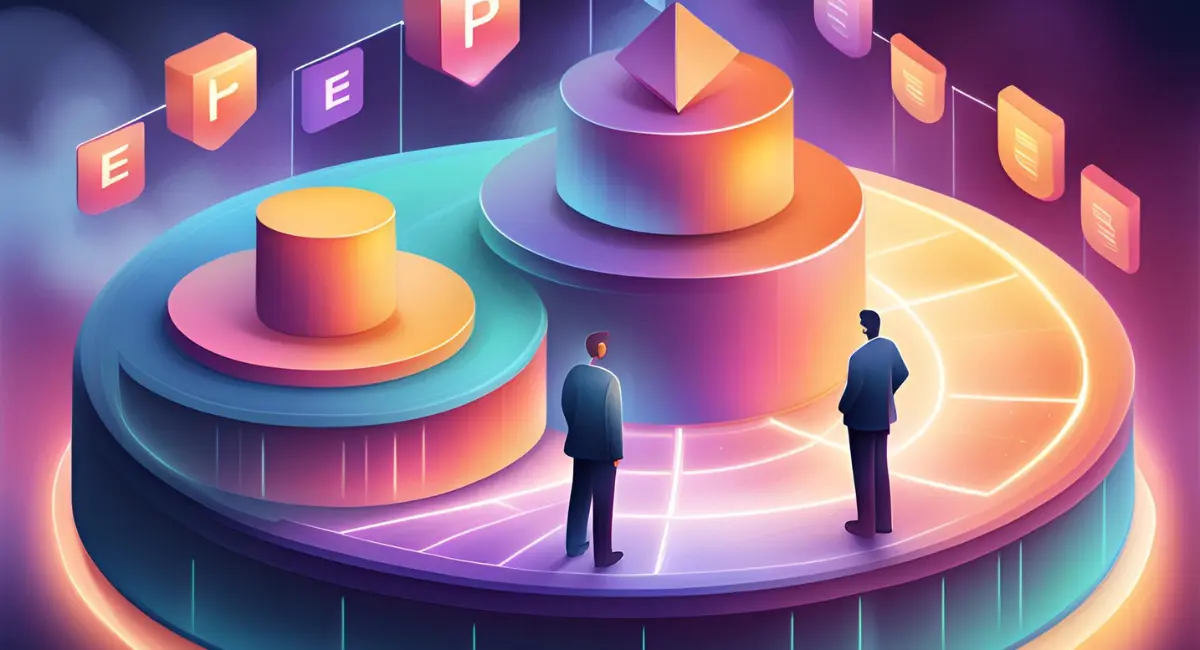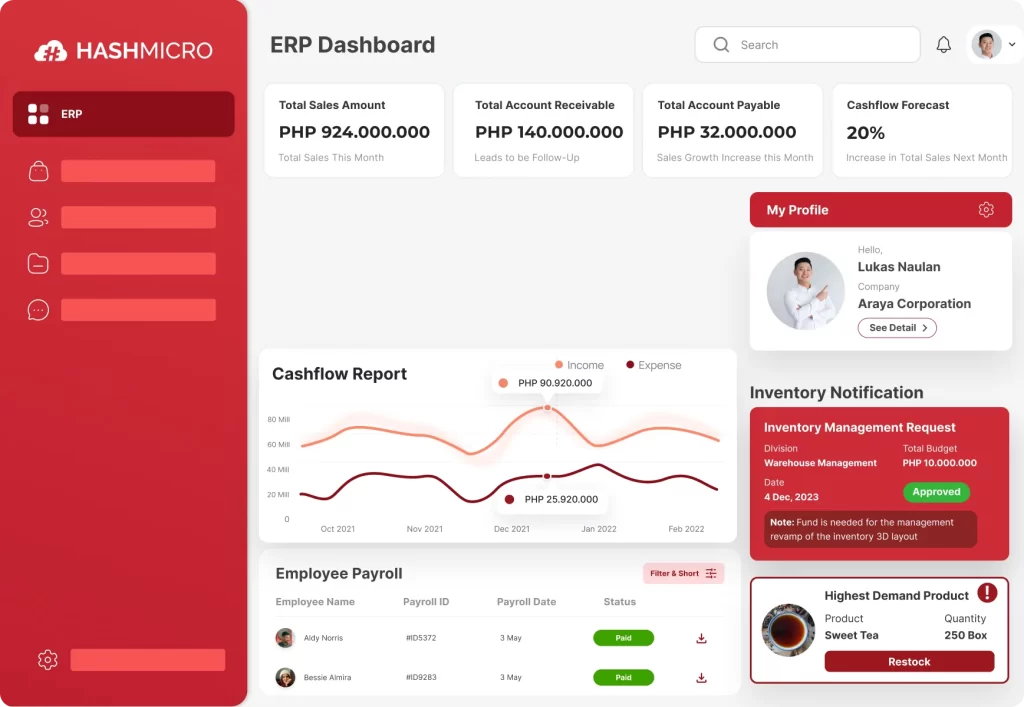Two-tier ERP involves the utilization of two separate ERP systems with different customization levels. It allows large enterprises to manage corporate operations using a Tier 1 ERP system, while smaller business units can leverage a Tier 2 ERP system.
Implementing a two-tier ERP system comes with its own set of considerations. From analyzing your business needs and evaluating ERP solutions to planning and executing the deployment, we will guide you through each step of the process.
Throughout this article, you will find real-world use cases and applications of two-tier ERP in different industries, showcasing its effectiveness in streamlining operations and achieving business transformation.
Table of Contents

Exploring the Fundamentals of Two-Tier ERP Strategy
The fundamentals of two-tier ERP strategy involve the utilization of two ERP systems with different customization levels. This approach allows businesses to effectively manage the needs of both their large corporations and smaller business units.
The distinction between Tier 1 and Tier 2 ERP systems is crucial in understanding the implementation of two-tier ERP. Tier 1 ERP systems are designed to handle essential corporate operations and cater to the complex needs of large enterprises.
On the other hand, Tier 2 ERP systems are more focused and customized to suit the specific operations and requirements of subsidiaries or smaller business units.
In terms of ERP customization, Tier 1 systems provide a high level of flexibility and customization options to fulfill the diverse needs of large corporations.
In contrast, Tier 2 systems offer a more streamlined and standardized approach, catering to the specific business operations of subsidiaries or smaller units.
The functionality and suitability of Tier 1 and Tier 2 ERP systems also vary. Tier 1 ERP systems encompass a wide range of functionalities and capabilities that support comprehensive corporate operations.
Meanwhile, Tier 2 ERP systems are tailored to meet the specific needs of subsidiaries, focusing on functionalities related to their particular operations.
The Concept of Two-Tier ERP
In the world of ERP system, two-tier ERP involves the utilization of two separate ERP systems to meet the unique needs of large enterprises with subsidiaries or multiple locations.
The distinction between Tier 1 and Tier 2 ERP systems plays a crucial role in the two-tier ERP strategy. Tier 1 ERP systems are designed to handle essential corporate operations and are implemented at the headquarters or main office.
On the other hand, Tier 2 ERP systems are specifically tailored to cater to the operations of subsidiaries or smaller business units. These systems offer more focused functionalities and can be customized.
Tier 1 ERP systems are typically less customizable due to the need for standardization across the entire business. Tier 2 ERP systems can be highly customized to align with the unique needs and processes of subsidiary operations.
Implementing a Two-Tier ERP System
Implementing a two-tier ERP system in your Philippine enterprise requires careful consideration of key factors to ensure a successful deployment. These key considerations include system integration, data flow, scalability, customization, and user adoption.
System integration is crucial to seamlessly connect your Tier 1 and Tier 2 ERP systems. It allows for efficient data sharing and real-time information flow between headquarters and subsidiaries.
Another important consideration is determining how data is shared and synchronized between the two ERP systems. Implementing an effective data management strategy is vital for maintaining data accuracy and integrity throughout your business.
It is essential to evaluate the scalability of your ERP solution, ensuring it can accommodate future growth and expansion without major disruptions or the need for complex system modifications.
Customization plays a critical role in adapting your ERP systems to meet the specific requirements of different business units within your business. By customizing your ERP solutions, you can optimize processes, enhance efficiency, and support unique business needs.
User adoption is crucial for the successful implementation and utilization of your two-tier ERP system. Training employees and providing ongoing support are essential for ensuring that users understand and utilize the system effectively, maximizing its benefits and driving business growth.
Before implementing a two-tier ERP strategy, assessing your business needs is essential to choosing the ERP strategy that aligns with your overall business goals and objectives.
Strategic Advantages
In today’s competitive business landscape, Philippine enterprises are constantly seeking strategic advantages to enhance their business operations. One such advantage lies in the adoption of a two-tier ERP strategy.
With a two-tier ERP strategy, businesses can experience improved operational efficiency. With two separate ERP systems catering to different business units, business can streamline processes and optimize resource allocation.
With seamless data flow between the ERP systems, companies can access accurate and up-to-date information across their entire business. This enables better decision-making at all levels, as well as improved visibility into business operations and performance.
Cost savings are another significant advantage of implementing a two-tier ERP strategy. By utilizing a Tier 1 ERP system for essential corporate operations and a Tier 2 ERP system for subsidiary-specific needs, businesses can achieve a more cost-effective approach compared to a single, all-inclusive ERP system.
A two-tier ERP strategy offers businesses adaptability and growth potential through its flexible and scalable nature. By enabling customization and expansion, it allows enterprises to adjust to market changes, meet specific demands, and seize growth opportunities.
Finally, adopting a two-tier ERP approach enhances user experience by providing tools tailored to specific business unit needs, boosting productivity and overall business performance.
From improved efficiency and productivity to cost savings, flexibility, scalability, and enhanced user experience, the implementation of a two-tier ERP system can provide businesses with a competitive advantage in the market.
Use Cases and Applications
One sector where two-tier ERP has demonstrated notable success is the beverage industry. Companies in this industry have implemented a two-tier ERP strategy to streamline their operations, optimize supply chain management, and enhance customer satisfaction.
The applications for two-tier ERP extend beyond the beverage industry. Various sectors, including manufacturing, retail, healthcare, and finance, have also leveraged this strategy to drive efficiency, and improve decision-making processes.
The versatility and adaptability of two-tier ERP make it a valuable solution for Philippine enterprises across different industries.
Choosing Your Path
When it comes to implementing a two-tier ERP strategy, there are various options to consider. Each option offers its own set of advantages and considerations, making it crucial to choose the path that aligns best with your business’ needs and requirements.
One approach is the use of hybrid models, which combine on-premises and cloud-based solutions. This allows businesses to leverage the benefits of both options, such as increased flexibility and scalability offered by cloud-based solutions.
Another option is to explore vendor partnerships. Collaborating with established ERP vendors can provide access to specialized expertise and support, ensuring a smoother implementation process and ongoing maintenance.
Cloud-based solutions have emerged as a popular choice for two-tier ERP implementation. These solutions provide a cost-effective and scalable option, with the added benefit of easy access to real-time data from multiple locations.
Cloud-based ERP systems also offer enhanced security and automated updates, freeing businesses from the burden of managing infrastructure and software maintenance.
Customization is another aspect to consider when choosing an ERP solution. While Tier 1 ERP systems often offer extensive customization options, they may not be the best fit for all Philippine enterprises. Tier 2 and Tier 3 ERP systems are designed to serve specific business needs and offer a more tailored approach to implementation.
It is essential for businesses to evaluate ERP solutions based on their functionality, scalability, cost-effectiveness, and suitability for Philippine enterprises. Comparing Tier 1, Tier 2, and Tier 3 options can help in making an informed decision.
Planning and Execution
When it comes to implementing a two-tier ERP strategy in Philippine enterprises, careful planning and flawless execution are crucial for success.
Project management plays a key role in the planning and execution phase. Assigning a project manager who will oversee the implementation process, set clear objectives, and manage timelines and resources is essential.
Involving key stakeholders from different departments and levels of the business ensures their buy-in and participation throughout the implementation process. Their insights and feedback can help shape the project’s direction.
Data migration is a complex task and should be carefully planned and executed to avoid any disruptions or data loss. It’s important to assess the existing data structure, clean and consolidate data, and define a migration strategy that minimizes downtime and maintains data integrity.
Provide comprehensive training programs for employees to familiarize themselves with the new system’s features and functionalities. Encourage them to ask questions and provide ongoing support to address any concerns or difficulties they may encounter.
Communicate the reasons behind the two-tier ERP implementation and its benefits to all employees. Address any resistance, manage expectations, and emphasize the positive impact the new system will have on streamlining business operations and enhancing productivity.
One powerful tool that can streamline business operations and support the planning and execution of a two-tier ERP strategy is HashMicro. Leveraging HashMicro as a solution enables seamless data integration, process automation, and real-time reporting.
Challenges and Solutions
Deploying a two-tier ERP strategy in Philippine enterprises poses various challenges. However, these obstacles can be overcome with the right solutions and strategies.
Data Synchronization: Implement robust data integration solutions and clear data governance processes to address synchronization issues between different ERP systems.
Seamless Integration: Careful planning and coordination, along with industry-standard integration protocols, ensure smooth data flow across systems.
Change Management: Overcome resistance to change with effective strategies, including comprehensive training programs and clear communication channels.
Cultural Adaptation: Develop cultural sensitivity and foster cross-cultural collaboration to address challenges arising from diverse work environments.
By recognizing these challenges and implementing appropriate solutions, Philippine enterprises can successfully deploy a two-tier ERP strategy. Explore HashMicro’s pricing schemes to find the right package for your business needs.
Future Trends
It is crucial for Philippine enterprises to stay updated with these emerging trends to remain competitive in the constantly changing business landscape.
Advancements such as AI, machine learning, and IoT are reshaping the way ERP systems are implemented. These technologies offer possibilities for optimizing business operations and enhancing decision-making capabilities.
An important aspect of future two-tier ERP strategies is keeping pace with technological advancements in ERP systems. Cloud computing, big data analytics, and mobile integration are just a few examples of the emerging technologies that are transforming ERP systems.
Cloud computing allows for greater flexibility and scalability, enabling businesses to adapt to changing demands and requirements.
Big data analytics provides valuable insights and real-time reporting, empowering decision-makers with actionable information.
Mobile integration enables remote access to ERP systems, facilitating efficient collaboration and streamlined workflows.
Making the Decision
When considering the adoption of a two-tier ERP strategy for your enterprise, there are several key factors to consider. By carefully evaluating these factors, you can make decision that aligns with your business requirements and goals.
To determine the suitability of a two-tier ERP solution for your Philippine enterprise, follow a step-by-step approach:
1. Assess Business Needs
Evaluate your current business needs, including your company size, complexity, geographic presence, and industry-specific requirements. Identify the pain points and challenges that a two-tier ERP strategy can address.
2. Conduct a Feasibility Study
Perform a feasibility study to analyze the feasibility and viability of implementing a two-tier ERP solution. Consider factors such as technical requirements, implementation timeline, resource availability, and potential risks.
3. Evaluate ERP Vendors
Research and evaluate different ERP vendors that offer two-tier ERP solutions. Consider their expertise, track record, customer reviews, and industry reputation. Shortlist vendors that align with your business needs and budget.
4. Consult with Industry Experts
Seek advice and insights from industry experts who have experience with two-tier ERP implementations. Gain knowledge from their expertise and learn from their success stories and challenges.
5. Consider Financial Implications
Analyze the financial implications of adopting a two-tier ERP strategy. Consider not only the upfront costs but also the long-term investment and potential return on investment. Calculate the cost savings and efficiency gains that the two-tier ERP solution can bring.
Conclusion
The implementation of a two-tier ERP strategy has a significant impact on Philippine enterprises. By embracing this approach, businesses can drive growth by optimizing their operations and decision-making capabilities.
Philippine enterprises that leverage two-tier ERP are well-positioned to adapt to technological advancements and gain a competitive edge in the market. Businesses can also stay ahead of the curve and achieve sustainable growth.
As the business landscape continues to evolve, it is crucial for Philippine enterprises to embrace change and optimize their operations through the adoption of efficient and effective two-tier ERP solutions.
One such solution is adopting HashMicro ERP Software. By doing so, businesses can drive business transformation, enhance their competitiveness, and pave the way for future success.
Get the free demo now and be ready to drive your enterprise into growth and success.
FAQ About Two-tier ERP Strategy
-
What is a two-tier ERP strategy?
A two-tier ERP strategy is an approach where an enterprise utilizes two separate ERP systems to meet the specific needs of its operations. The main ERP system, known as Tier 1, is implemented at the corporate level to manage essential business operations.
The subsidiary or smaller business units, on the other hand, implement Tier 2 ERP systems to address their unique requirements while still ensuring data integration with the corporate system.
-
How does a two-tier ERP strategy benefit Philippine enterprises?
Two-tier ERP strategies offer several benefits for Philippine enterprises. Firstly, it allows for greater flexibility and scalability, as the individual business units can choose ERP systems that are best suited to their specific needs.
This helps optimize efficiency and productivity. Secondly, it facilitates localization of operations, enabling subsidiaries to adapt to the local market while still maintaining communication and data integration with the corporate level. Lastly, a two-tier ERP strategy can provide cost savings by allowing smaller entities to access more affordable ERP solutions without compromising on functionality.
-
How do I determine if a two-tier ERP strategy is suitable for my enterprise in the Philippines?
To determine the suitability of a two-tier ERP strategy for your enterprise in the Philippines, consider factors such as company size, complexity, geographic presence, and industry-specific requirements. Assessing your business needs and conducting a feasibility study can also help determine if the strategy aligns with your long-term goals.
Consulting with industry experts and evaluating ERP vendors can further assist in making an informed decision. It is important to carefully analyze the potential benefits and challenges to ensure that a two-tier ERP strategy is the right fit for your enterprise.
{
“@context”: “https://schema.org”,
“@type”: “FAQPage”,
“mainEntity”: [{
“@type”: “Question”,
“name”: “What is a two-tier ERP strategy?”,
“acceptedAnswer”: {
“@type”: “Answer”,
“text”: “A two-tier ERP strategy is an approach where an enterprise utilizes two separate ERP systems to meet the specific needs of its operations. The main ERP system, known as Tier 1, is implemented at the corporate level to manage essential business operations.
The subsidiary or smaller business units, on the other hand, implement Tier 2 ERP systems to address their unique requirements while still ensuring data integration with the corporate system.”
}
},{
“@type”: “Question”,
“name”: “How does a two-tier ERP strategy benefit Philippine enterprises?”,
“acceptedAnswer”: {
“@type”: “Answer”,
“text”: “\”Two-tier ERP strategies offer several benefits for Philippine enterprises. Firstly, it allows for greater flexibility and scalability, as the individual business units can choose ERP systems that are best suited to their specific needs.
This helps optimize efficiency and productivity. Secondly, it facilitates localization of operations, enabling subsidiaries to adapt to the local market while still maintaining communication and data integration with the corporate level. Lastly, a two-tier ERP strategy can provide cost savings by allowing smaller entities to access more affordable ERP solutions without compromising on functionality.\””
}
},{
“@type”: “Question”,
“name”: “How do I determine if a two-tier ERP strategy is suitable for my enterprise in the Philippines?”,
“acceptedAnswer”: {
“@type”: “Answer”,
“text”: “\”To determine the suitability of a two-tier ERP strategy for your enterprise in the Philippines, consider factors such as company size, complexity, geographic presence, and industry-specific requirements. Assessing your business needs and conducting a feasibility study can also help determine if the strategy aligns with your long-term goals.
Consulting with industry experts and evaluating ERP vendors can further assist in making an informed decision. It is important to carefully analyze the potential benefits and challenges to ensure that a two-tier ERP strategy is the right fit for your enterprise.\””
}
}]
}









